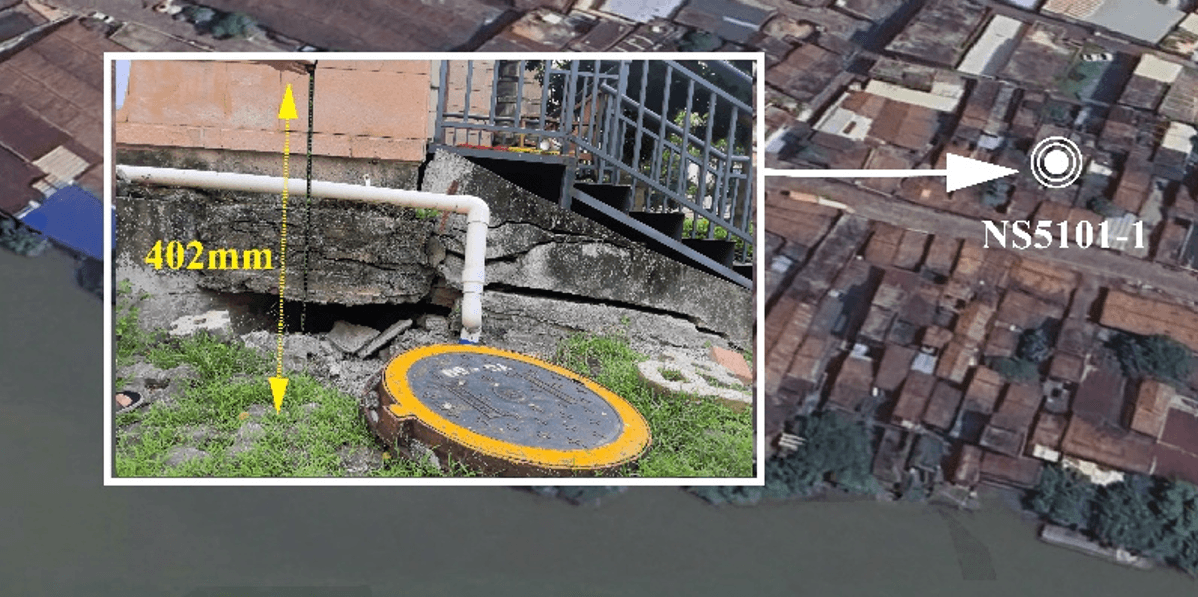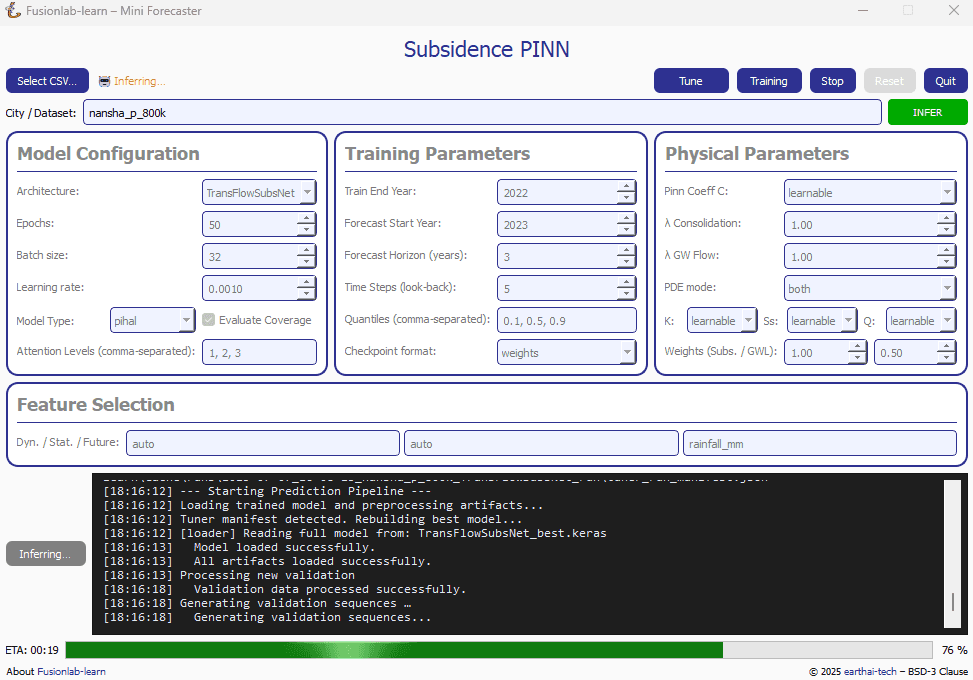Land Subsidence Forecasting
Physics-aware deep learning (XTFT/TFT) with calibrated uncertainty for urban risk planning.
Weakening Urban Foundations
Land subsidence is a relentless geohazard, quietly increasing flood risks and infrastructure vulnerability in cities worldwide. Driven by groundwater over-extraction and urban expansion, this phenomenon poses a critical threat to sustainable development.

The Evolution of My Approach
My research journey evolved from standard "black box" models (like XGBoost & LSTM) to the development of TransFlowSubsNet. This novel physics-informed AI framework learns from both data and the governing laws of geomechanics, resulting in forecasts that are accurate, interpretable, and trustworthy for decision-makers.

The `TransFlowSubsNet` in action: Subsidence PINN Mini Forecaster GUI
Key Discoveries
Uncovered Hidden Properties
The model revealed Nansha's subsurface is over 30x more compressible than Zhongshan's—a critical insight for future construction and planning.
Built Trust with Decision-Makers
By integrating geophysics principles, the model's forecasts became scientifically sound, bridging the gap between AI research and real-world policy.
Enabled Proactive Policy Testing
The framework allows city planners to simulate different policy scenarios (e.g., water management) to find the most effective strategies for mitigating subsidence.
What You'll Learn (Summary)
- Where/when subsidence accelerates: physics-aware models surface emerging hotspots.
- How confident we are: calibrated uncertainty clarifies forecast trust and communicates risk.
- What to do about it: policy scenarios show how planning choices reduce hazard.
Key Outputs & Tooling
Related publications
- Machine learning-based techniques for land subsidence simulation in an urban areaLiu, J.; Liu, W.; Allechy, F. B.; Zheng, Z.; Liu, R.; Kouadio, K. L.* · Journal of Environmental Management · 2024
- Forecasting Urban Land Subsidence in the Era of Rapid Urbanization and Climate StressKouadio, K. L.; Liu, R.; Jiang, S.; Liu, J.; Kouamelan, S.; Liu, W.; Qing, Z.; Zheng, Z. · Submitted — Nature Communications · 2025